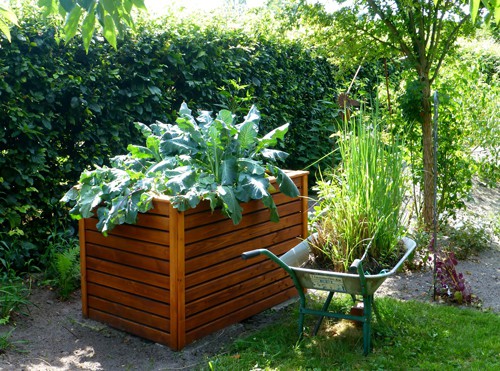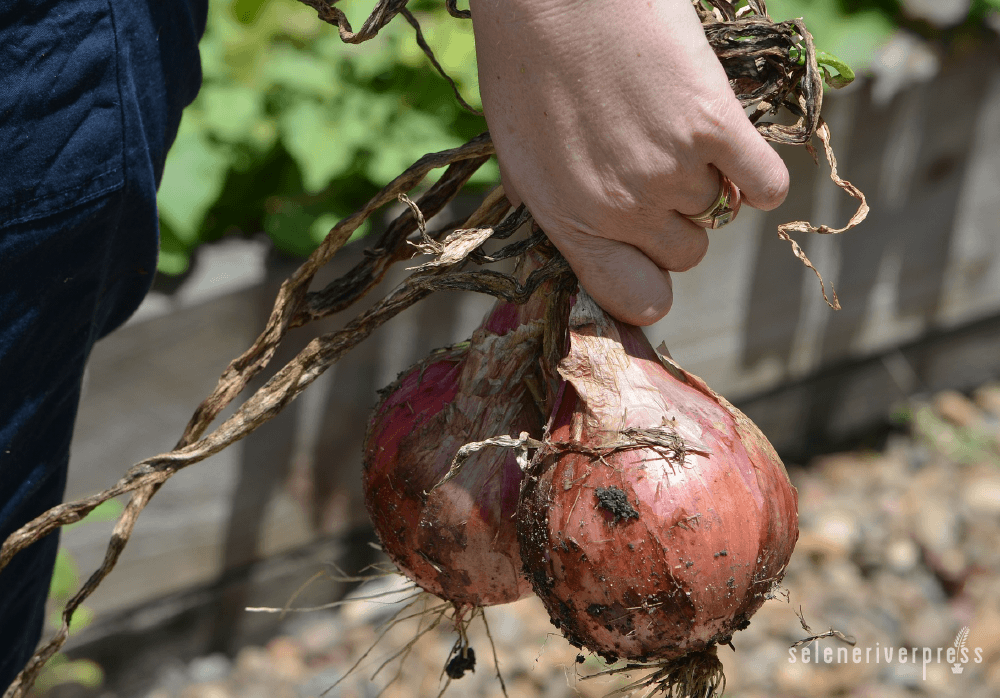I’m a big believer in sustainability, and I always enjoy helping people grow their own vegetables and produce. This is something I have plenty of experience in because I love showing other people how to get the most from their garden. It’s often much easier than you think.
In return for a little work, you can create a sustainable source of healthy and nutritious food for your home. Many families find this to be a bonding, rewarding experience that gets everyone outside. Above all, it helps decrease your reliance on supermarkets, saving you money in the long run.
Create Ground Level or Raised Vegetable Beds
 One smart tip I always recommend is to look into vegetable beds, including both ground level and raised variants. Beds are easy to create as you only need a big container of some sort. As long as it’s wide enough for planting and offers soil deep enough for crops to take root, it will work. Wooden barrels and other waist high alternatives—made from sustainable materials—are easy to find and work perfectly well.
One smart tip I always recommend is to look into vegetable beds, including both ground level and raised variants. Beds are easy to create as you only need a big container of some sort. As long as it’s wide enough for planting and offers soil deep enough for crops to take root, it will work. Wooden barrels and other waist high alternatives—made from sustainable materials—are easy to find and work perfectly well.
From a practical point of view, beds make the growing patch easier to reach, but separating it from the ground soil actually has its own benefits. As I’ll explain shortly, each vegetable has its own requirements, including the pH level of the soil. Using different beds, you can create different environments for each respective plant without cross-contamination.
Regulate pH Levels
Speaking of pH, you always need the right pH level for each plant. The level will either be acidic (below 7) or alkaline (above 7), and you’ll find that plants thrive in the right pH conditions. Potatoes, for instance, require a light acidic bed with soil between 5.3–6 pH, while carrots prefer a range of 6–6.5 pH. When plants are in their optimum pH range, they receive the right balance of healthy nutrients and benefit from a stronger immune system. If the pH level isn’t right, plants will struggle to get the nutrients they need. In some vegetables, this can cause blossom-end rot due to a lack of calcium.
This is why it’s useful to make separate growing beds. You can use compost, mulch, and other additives to lower or raise the pH level as you require. You can measure the pH with a range of devices, and—relying on some of the methods we discuss throughout this article—you can readily adapt a number of beds to host different pH levels so your plants will thrive.
Make Organic Compost and Mulch
 When it comes to a sustainable garden, compost is an easy first step. Simply gather into a pile any organic matter that you have. This includes garden cuttings, dead leaves, and even raw food waste from inside the home. If you monitor what you put into the compost, you can create a nutrient rich meal that will alter the pH levels of the soil. Compost is relatively easy to create, as it often takes care of itself. All you need to do is provide a dark, damp environment. Natural processes will provide the rest.
When it comes to a sustainable garden, compost is an easy first step. Simply gather into a pile any organic matter that you have. This includes garden cuttings, dead leaves, and even raw food waste from inside the home. If you monitor what you put into the compost, you can create a nutrient rich meal that will alter the pH levels of the soil. Compost is relatively easy to create, as it often takes care of itself. All you need to do is provide a dark, damp environment. Natural processes will provide the rest.
In time you’ll find your garden will present you with dead matter perfect for next year’s compost on a regular basis. This self-sustaining system can also be used to create mulch from wood chips, leaves, and cuttings, too. Not only does this provide a free resource, but it also uses up most (if not all) of your biodegradable waste. For more tips on composting and gardening, get a copy of Maximizing Your Mini Farm: Self-Sufficiency on ¼ Acre.
Maintain an Organic Focus
When it comes to meeting the various needs of your garden, it helps to always remember your organic goals. While going to the shop might seem easy, you typically have the means to acquire everything you need without paying the full retail price.
Other than compost and mulch, you can also create your own bone meal. This is a handy replacement for calcium powders and makes good use of the bones your local butcher or abattoir are more than happy to get rid of—give them a call and ask! It will likely be free or cost very little, and it will allow you to grow your garden without sacrificing your organic objectives.
When it comes to other natural and organic fertilizers, you can also create fish emulsion from leftover fish remains. Did you know you can even use ground coffee beans? Even used beans are great at bringing down the alkaline values of the soil. Use your own if you have enough, but also ask your local cafe or coffee shop what they do with theirs.
Create Your Own Seed Bank
When you begin cultivating and expanding your garden, always keep some spare seeds in a secure location. These seeds will be vital if a bad winter, strong summer, or local infection wipes out many of your plants. Rather than having to pay for seeds and start from scratch, you can simply replant your spare seeds in the spring.
Most plants produce an ample amount of seeds, so you’ll have plenty to both save and use in your garden. Furthermore, by storing them in a safe location, you can always help a friend in need and maybe even donate to a national seed collection once you have a good number of reserve seeds. Part of gardening is involving yourself with a wider community, and seed banks give gardeners a way to help each other out in times of need.
I hope this post highlights just how easy it can be to grow vegetables in a sustainable fashion. Once you learn about pH levels and understand how to create your own composts and mulch, you can easily grow a wide range of crops in any garden. Creating your own sustainable vegetable garden is also an ideal opportunity to get outside more—and it’s a safe family activity with younger children. Just remember that there’s no rush, so you can start off slow and take your time as you learn these vital gardening techniques.



